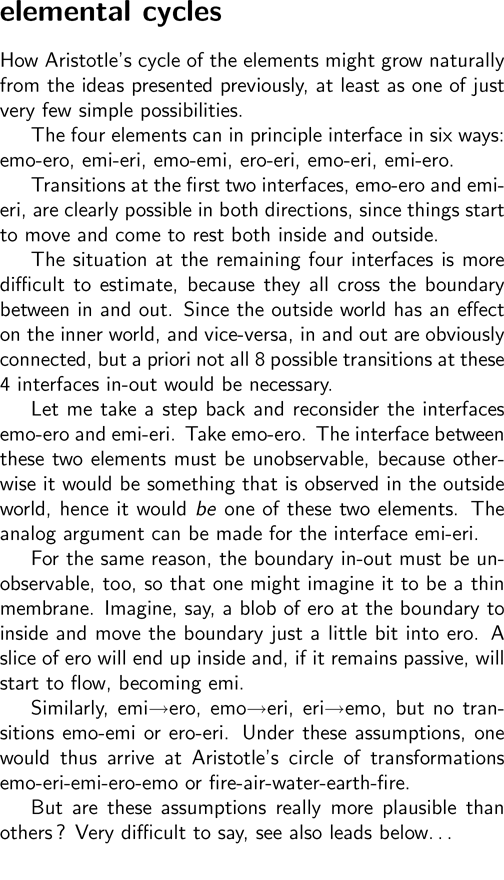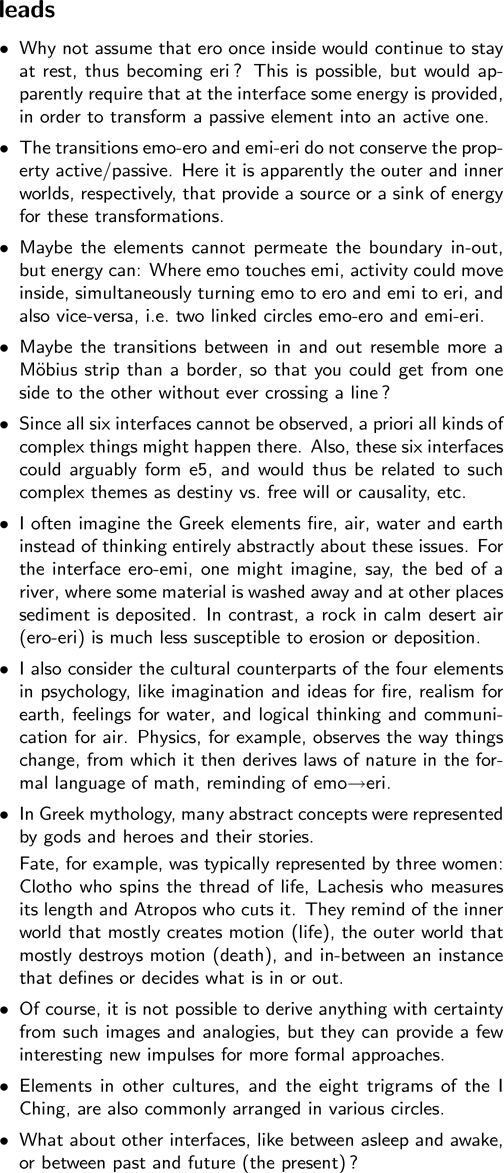








|
|

|
     |
|
|
elemental cyclesHow Aristotle's cycle of the elements might grow naturally from the ideas presented previously, at least as one of just very few simple possibilities. The four elements can in principle interface in six ways: emo-ero, emi-eri, emo-emi, ero-eri, emo-eri, emi-ero. Transitions at the first two interfaces, emo-ero and emi-eri, are clearly possible in both directions, since things start to move and come to rest both inside and outside. The situation at the remaining four interfaces is more difficult to estimate, because they all cross the boundary between in and out. Since the outside world has an effect on the inner world, and vice-versa, in and out are obviously connected, but a priori not all 8 possible transitions at these 4 interfaces in-out would be necessary. Let me take a step back and reconsider the interfaces emo-ero and emi-eri. Take emo-ero. The interface between these two elements must be unobservable, because otherwise it would be something that is observed in the outside world, hence it would be one of these two elements. The analog argument can be made for the interface emi-eri. For the same reason, the boundary in-out must be unobservable, too, so that one might imagine it to be a thin membrane. Imagine, say, a blob of ero at the boundary to inside and move the boundary just a little bit into ero. A slice of ero will end up inside and, if it remains passive, will start to flow, becoming emi. Similarly, emi->ero, emo->eri, eri->emo, but no transitions emo-emi or ero-eri. Under these assumptions, one would thus arrive at Aristotle's circle of transformations emo-eri-emi-ero-emo or fire-air-water-earth-fire. But are these assumptions really more plausible than others ? Very difficult to say, see also leads below... leads
|